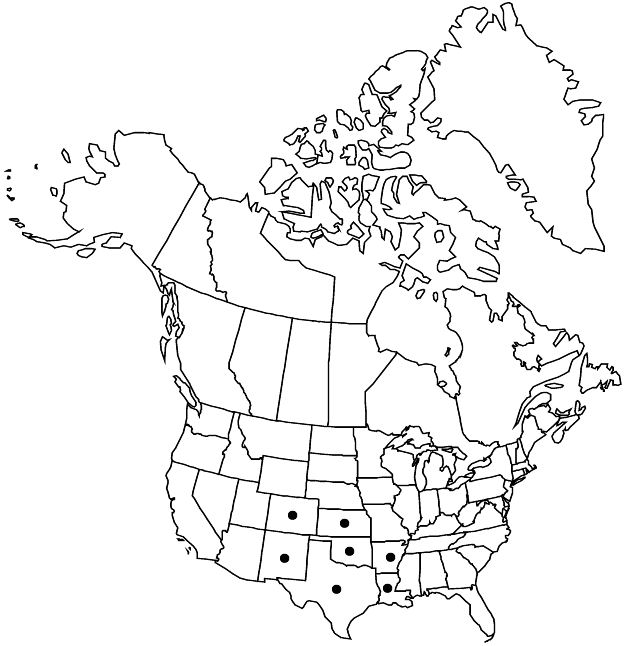Prunus gracilis
Boston J. Nat. Hist. 5: 243. 1845.
Shrubs, suckering, 3–15 dm, not thorny. Twigs with axillary end buds, densely hairy. Leaves deciduous; petiole 3–8 mm, densely hairy, usually eglandular, sometimes glandular distally, glands 1–3, discoid; blade usually ovate or elliptic, rarely obovate, 2–5 (–7) × 1–2.5 (–3.6) cm, base obtuse to cuneate, margins finely, singly or doubly serrulate, teeth sharp, usually eglandular, sometimes glandular, glands blackish, spheric, apex acute to obtuse, abaxial surface densely hairy, adaxial sparsely hairy. Inflorescences 2–4 (–6) -flowered, umbellate fascicles. Pedicels 4–15 mm, hairy. Flowers blooming before or at leaf emergence; hypanthium campanulate, 2–3 mm, hairy externally; sepals erect to spreading, ovate-oblong, 1.5–2.5 mm, margins usually entire, sometimes glandular-toothed or eglandular, sometimes ciliate, surfaces hairy; petals white, oblong to obovate, 4–7 mm; ovaries glabrous. Drupes yellow, orange, or red, slightly glaucous, globose to ellipsoid, 9–18 mm, glabrous; mesocarps fleshy; stones subglobose to ellipsoid, ± flattened.
Phenology: Flowering Mar–Apr; fruiting Jun–Aug.
Habitat: Sandy roadsides, upland thickets, open woods, waste places
Elevation: 100–1300 m
Distribution

Ark., Colo., Kans., La., N.Mex., Okla., Tex.
Discussion
Typically, sepals of Prunus gracilis are eglandular; in some specimens, glands occur along the margins. Similar glands are sometimes found on the tips of teeth along the leaf margins. The teeth are always sharp-pointed rather than blunt or rounded as they are in those plums whose leaves consistently have glandular teeth. Presence of glands on the sepals is not correlated with glands on leaf marginal teeth. Prunus gracilis, native to the southern Great Plains, is very similar to P. maritima, a plum of the eastern seaboard over 1600 km away.
Selected References
None.